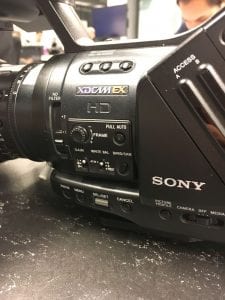During the Monday class, we had the opportunity to look at more video examples of how people observed – this, in particular, was about interviews, vox pops and the type of filming that was involved. We went back as far the film era, where everything was all filmed in black and white.
One of the interesting content show in class that caught my attention was the vox pop style of video where these two French ladies went up to strangers in public and asked if they were happy. It is a fascinating take on ‘observations’ and interviews in general because it didn’t have the traditional format where the camera would be in front of the person being interviewed. Rather, these participants were unaware that they were being filmed which was what appealed to me. The examples shown in class are highly relevant to the practice that we do during class.
Exercise Five is an example of this, as we collaborated and decided to make a formal style of interview. It took us a while to decide on the positioning of the camera but it all paid off in the end because we got the desired shot. Our main topic was about ‘food’, including the questions that were asked. As interviewer with a time constraint, I had to think of the questions on the spot which was both exciting and nervewracking – it had been a while since I did an interview, even though this was a short impromptu-style of interviewing. Getting thrown into the deep end, that is, having a small amount of time to set up a bulky camera and tripod puts you on the spot and forces you to as efficient as you can possibly manage.
It was a more relaxed lesson during Friday’s class as we got around to the technicalities of the camera. The only different thing about Friday’s lesson was that we actually studied the external part of the camera. Basically, we examined the manual of the camera, got to know the settings, that is, all the controls and buttons. I learned a few things today and also got to recap some of the information that we’ve previously learned these past few weeks. An example would be discovering that there is such thing as a black balance, there are different types of aspect ratios and is closely related to the video format (1920×1080, 16:9 – all that numerical jazz).
This camera is great in producing high-quality footage, however, it causes great inconvenience for me having to carry a big bag and a heavy tripod home in public transport. If ever I were to enter the media field as a cinematographer, this camera is a great starting point. At this point, however, I have access to other cameras that would produce similar quality and would be much more simpler to use. If at this point the camera was not a compulsory part of the course, I would navigate around simpler and much more compact cameras. At the same time, I do recognise the purpose of learning how to use the Sony EX-3 as it is the industry standard and sets the tone for how you would operate with other cameras in a professional manner. Robin has taught me a lot as to how one should carry themselves when setting up and operating a camera, especially in a professional scene.


